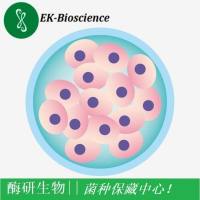Laser Microdissection for Gene Expression Study of Hepatocellular Carcinomas Arising in Cirrhotic and Non-Cirrhotic Livers
互联网
505
Laser microdissection (LMD) is a robust well-established technology for the isolation of chosen cell populations from surrounding tissues and cells. This technique is particularly useful to minimize bias inherent in the molecular analysis of highly heterogeneous whole tissue sections. The aim of this study was to identify the pattern of mRNA expression in hepatocellular carcinoma (HCC) arising in cirrhotic liver and compare it to the pattern of expression in HCC arising from non-cirrhotic liver. The expression profiles of the tumors were also compared to that of the surrounding liver (either cirrhotic or non-cirrhotic) from the same patient. In addition, the expression pattern of each of the four tissues were compared to normal hepatic tissue. Samples of HCC tissue and surrounding cirrhotic or non-cirrhotic parenchyma were collected at the time of resection or liver transplantation. The samples were snap frozen and stored at −80�C. The snap frozen samples were then cryosectioned and stained with hematoxylin and eosin for LMD. Hepatocytes from each sample were collected using the Leica LMD instrument. The RNA was extracted according to standard methodology and amplified. Microarray analysis was performed using the Affymetrix human genome array platform. The resulting microarray data were analyzed using Affymetrix Microarray Suite 5.0 (MAS 5.0). Results were displayed using Genespring, dChip, SAM, and GenMapp/MAPP Finder software. Validation studies on selected genes and proteins were performed utilizing RT-PCR and immunohistologic techniques.









